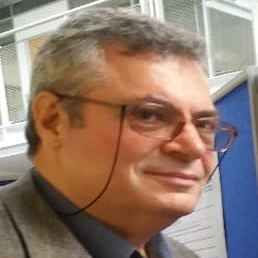Minerals Study, Applications and Processing: Building the Foundations of a Green Future
A special issue of Minerals (ISSN 2075-163X).
Deadline for manuscript submissions: closed (30 April 2022) | Viewed by 16954
Special Issue Editors
Interests: processing; metallurgy; geochemistry; environmental technologies for waste treatment; contaminated soils and groundwater; risk assessment
Special Issues, Collections and Topics in MDPI journals
Interests: separation sciences and related technologies; wastewater/water treatment; membrane fouling; aerobic/anaerobic digestion; recovery/removal of metals from liquid waste streams; physicochemical methods for the treatment of contaminated water sources or of wastewaters, biological/aerobic or anaerobic treatment methods; combinations of biological and physicochemical methods; treatment/recycling issues of toxic industrial solid wastes; hydrometallurgical; physico-chemical (solidification/stabilization); thermal (vitrification), or appropriate combinations of treatment processes; carbon capture utilization and storage (CCUS)
Special Issues, Collections and Topics in MDPI journals
Special Issue Information
Dear Colleagues,
The need to adopt a circular economy model, incorporating all processing practices, and to formulate a development strategy that emphasizes critical raw material exploration and environmental integrity emerges as a major challenge for the mining industry. The engagement of mining and metallurgical companies with the research community, the policymakers and modern society appears as the only opportunity to accelerate the transformation of such a primary sector of the economy and promote innovative ideas, tools and methodologies.
On this concept, the main concern of the International Conference on Raw Materials and Circular Economy is to bring together academics, engineers, early-stage scientists, industry executives, agents of public bodies, stakeholders and other professionals from the field of raw materials for a comprehensive, cross-discipline exchange of knowledge. The main topics of the conference include:
- New trends in mineral exploration and characterization;
- Advances in mineral processing;
- Sustainable metallurgy;
- Novel industrial minerals;
- Environment and energy issues;
- Waste valorization;
- Education on minerals;
- Circular economy strategies;
- Hygiene and safety aspects.
We invite all people from research institutes, government bodies and industry professionals to participate in the conference and share their latest developments in one of the trending topics. To all that are joining us at the conference, please do not miss out on this the opportunity to submit your full paper to the Special Issue.
Interesting contributions from RawMat 2021 and other researchers who work in this field are both welcome!
Prof. Dr. Anthimos Xenidis
Prof. Dr. Anastasios Zouboulis
Dr. Evangelos Tzamos
Guest Editors
Manuscript Submission Information
Manuscripts should be submitted online at www.mdpi.com by registering and logging in to this website. Once you are registered, click here to go to the submission form. Manuscripts can be submitted until the deadline. All submissions that pass pre-check are peer-reviewed. Accepted papers will be published continuously in the journal (as soon as accepted) and will be listed together on the special issue website. Research articles, review articles as well as short communications are invited. For planned papers, a title and short abstract (about 100 words) can be sent to the Editorial Office for announcement on this website.
Submitted manuscripts should not have been published previously, nor be under consideration for publication elsewhere (except conference proceedings papers). All manuscripts are thoroughly refereed through a single-blind peer-review process. A guide for authors and other relevant information for submission of manuscripts is available on the Instructions for Authors page. Minerals is an international peer-reviewed open access monthly journal published by MDPI.
Please visit the Instructions for Authors page before submitting a manuscript. The Article Processing Charge (APC) for publication in this open access journal is 2400 CHF (Swiss Francs). Submitted papers should be well formatted and use good English. Authors may use MDPI's English editing service prior to publication or during author revisions.
Keywords
- Critical raw materials
- Circular economy strategies
- Mining
- Processing
- Sustainability
- Metallurgy
- Industrial minerals
- Environmental monitoring








